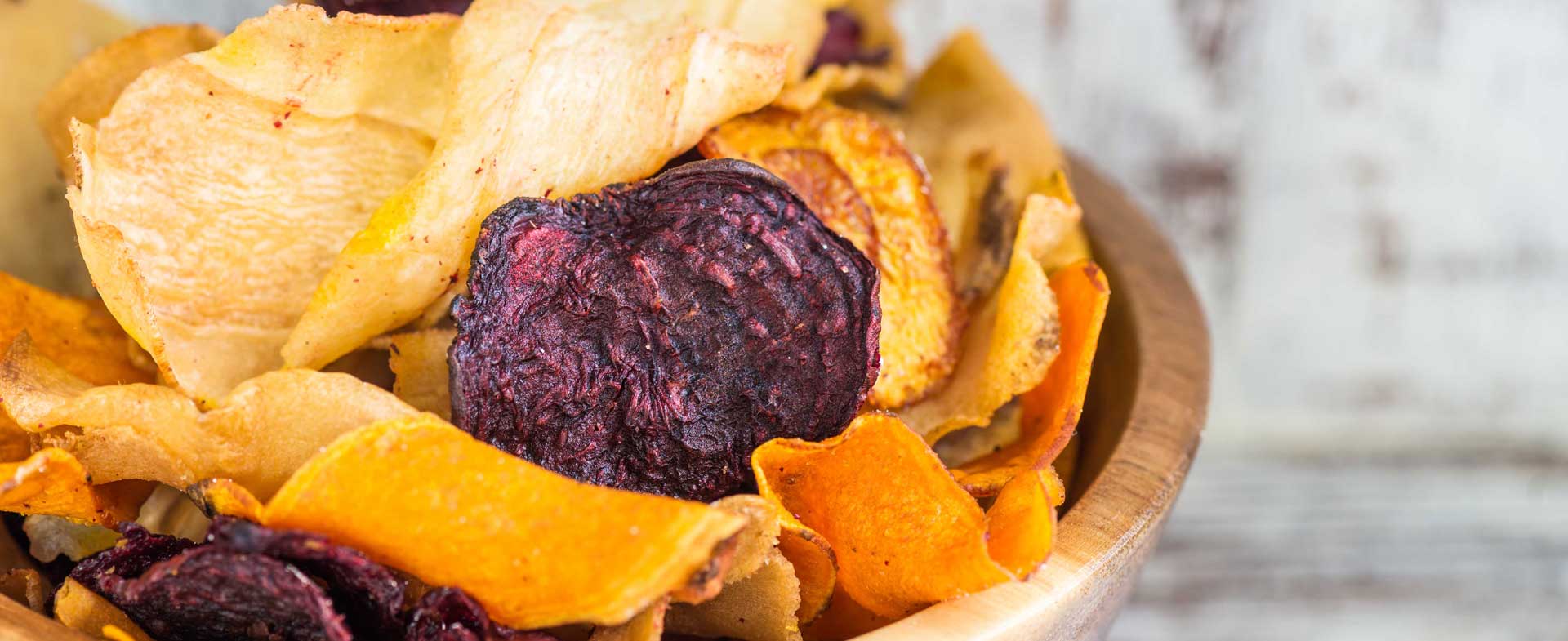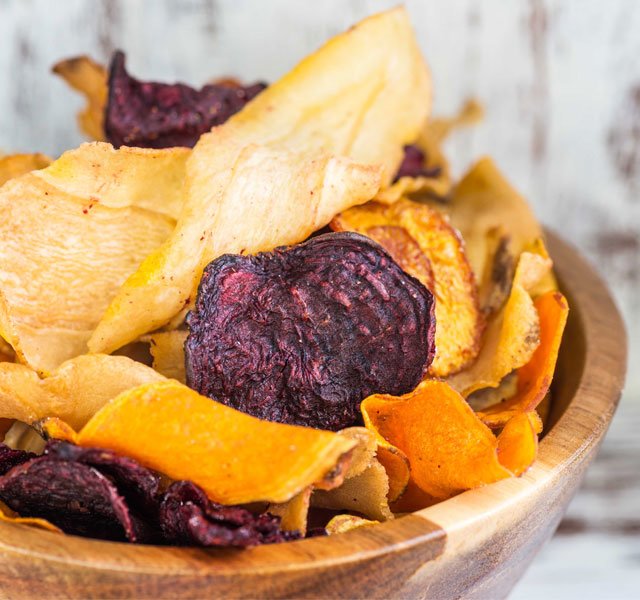These days, more and more Americans aren’t sitting down for three square meals. Instead, they’re eating in the car, on the train and while binging the latest Netflix release. Amid all the on-the-go eating, there’s a growing demand for healthier foods that taste good.
In response, savvy food manufacturers are developing snacks with seemingly nutritious ingredients like cauliflower, kale, beans, live active cultures and non-GMO grains. But are these foods really as virtuous as we think?
Snack Attack
Most of us know we should be eating more fruits and vegetables. We’re also aware that we should eat whole grains and limit sweets. Manufacturers are capitalizing on our desires — and their brilliant marketing teams are working to ensure that freeze drying some vegetables and putting them into snack foods pays off.
Among the top offenders:
- Veggie chips: Whether you’re noshing on kale chips, beet chips or carrot chips, chances are good your healthy-sounding snack has the same nutrient profile as standard potato chips. After all, potatoes are vegetables, too. Check to see what is listed as the first ingredient. Is the vegetable used as the chip, or is it a dehydrated powder form that has been added back? In this case, manufacturers are just processing the vegetables — and stripping away nutrients — to transform it into a product they can use.
- Ancient grains: Snack creators are increasingly substituting corn with ancient grains such as quinoa, sorghum and amaranth. You’ll see these grains in food ranging from tortilla-like chips to popped snacks (like popcorn, minus the corn). Just like veggie chips, though, it’s important to check the list of ingredients. These seemingly healthful alternatives are likely quite similar to traditional corn-based snacks.
- Legumes: Beans, lentils and chickpeas are also turning up in typically corn-based snack foods. And while these ingredient switches may result in healthier options, it’s still important to compare labels.
- Live cultures: Want a healthier gut? Snack food makers want consumers to believe foods with live active cultures are the answer. Trouble is, scientists haven’t yet determined which cultures produce the desired results. But that hasn’t stopped food manufacturers from creating shelf-stable probiotic snacks ranging from nut butters to granola bars.
Smart Snacking
With so many misleading options in the snack aisle, what’s a health-conscious eater to do? The most nutritious snacks are whole, unprocessed foods like raw veggies, whole fruits, nuts, seeds and whole grains. Your best bet? View packaged snacks of any type as a treat — not a staple — and pay attention to the fine print. Here’s how:
- Read the nutrition facts: Compare labels side by side and note any differences in nutrients. While snacks made from vegetables or ancient grains may have a slight uptick in nutrients like potassium and fiber, chances are good their overall nutrient profile is similar to other snack foods.
- Check the ingredient list: No matter which snacks you choose, try to select products with whole ingredients, not dehydrated powder forms.
- Watch the extras: The dietary culprits lurking in healthier snack foods tend to mirror those in conventional products. Whether your nutrient of concern is fat, calories or sodium, review the food label and pay attention to serving sizes.
An even better idea: Consider making your own snack foods. There are plenty of recipes for on-the-go options ranging from granola bars to roasted garlic and turmeric chickpeas. That way, you have control over the ingredients.



